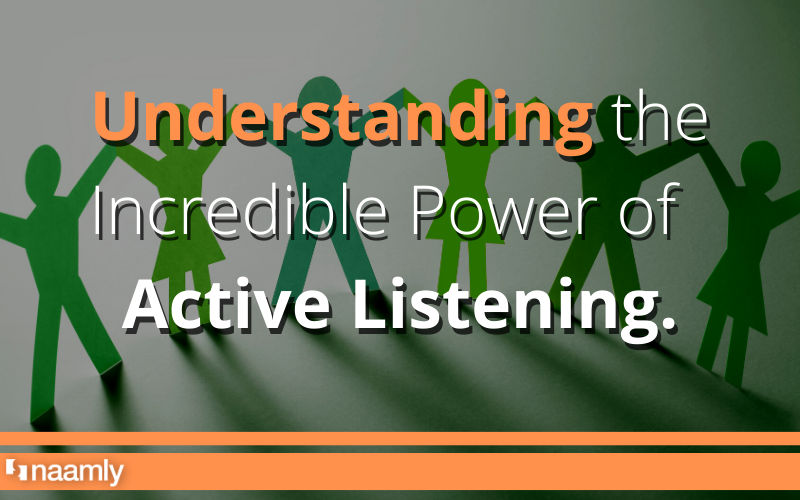Ever been caught “not listening”? We all have. The response we get is almost always indignant and frustrated. Don’t sweat it…it’s not your fault. At least not yet…
Listening is a skill. That means it can be practiced and improved. Here’s the simplest way to do that.
Let’s define it first – active listening is the process of fully concentrating on, understanding, and responding to the speaker’s message. It involves not only hearing the words being said but also paying attention to the speaker’s tone, body language, and emotions. Active listening requires a willingness to be fully present and engaged with the speaker, which can help to create a deeper level of understanding and connection… tools essential for coaching, management and sales.
So how can we become better active listeners?
- Show the speaker that you are fully engaged and present. This involves maintaining eye contact, nodding, and using verbal cues such as “mm-hmm” or “I see” to indicate that you are listening. Active feedback matters.
- Focus on the speaker’s message, not your own thoughts or distractions. Avoid interrupting or thinking about your response before the speaker has finished talking. This is the easiest way to ensure someone feels heard.
- Pay attention to the speaker’s tone, body language, and emotions. This can help you understand the underlying message and respond in a more empathetic and effective way. This is essential to overcoming obstacles and objections.
- Use reflective listening techniques such as paraphrasing or summarizing to demonstrate that you have understood the speaker’s message. Seek first to understand if YOU want to be understood.
- Ask open-ended questions that encourage the speaker to share more about their thoughts, feelings, and experiences.
- Avoid judgment or criticism, and instead focus on understanding the speaker’s perspective and feelings. It’s not as important to agree as it is to create room for discussion.
- Take time to reflect on the conversation and follow up with the speaker to demonstrate that you value their thoughts and opinions.
By incorporating these elements into our conversations, we can become more effective and empathetic active listeners. Active listening requires practice and preparation. However, by focusing on the speaker and being fully present in the moment, we can create deeper connections and more meaningful relationships in our personal and professional lives.

